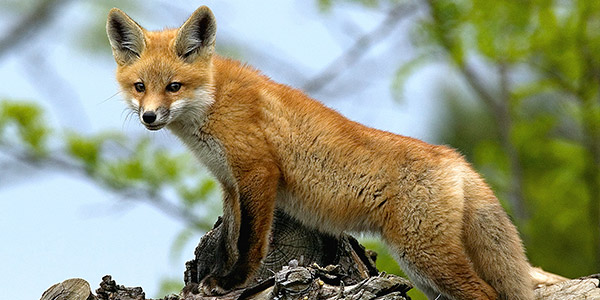Sure, Fido and friends can savor their comfy lives.
They fetch balls, wiggle tales and are rewarded handsomely.
But compared to their untamed brethren (shown here), those are minor accomplishments. That becomes clear in “Dogs ion the Wild,” a three-part “Nature” series that starts at 8 p.m. Wednesday (Feb. 8) on PBS.
“They’re incredibly intelligent,” producer Jo Shinner told the Television Critics Association. “They’re incredibly resilient, adaptable. They’re on all continents throughout the world, except for Antarctica. They manage to sustain in ridiculous conditions.”
Her series looks at all 37 canine species, finding adaptations to those conditions.
In Brazil, the maned wolf “looks like it’s standing on stilts,” she said. “It’s got these really, really long, skinny legs so it can see over the grasses.”
And in the Kalahari, black-backed jackals “chase birds and doves. You can see them flying in the airs, as if they were birds themselves, to catch their prey.”
There aren’t any Antarctic dogs, but there are plenty of Arctic foxes and Arctic wolves, surviving temperatures as low as 40-below.
And then there’s the flip side. “The Sahara is the size of China,” Shinner said. “It’s 6 percent of the world’s mass. It’s absolutely crazy.”
The summertime highs average over 100 degrees and have reached 116; winter nights occasionally dip below freezing. What sort of super-dog could thrive there?
Fred Kaufman, the “Nature” series producer, introduced the TCA to Fig, part of an elite group: “the world’s smallest wild dog – the fennec fox.”
A typical one stands less than eight inches tall and weighs between 2 and 4 pounds. (Wolves in the wild can top 130 pounds.) Fig – raised in captivity to meet school groups – seems like a snuggly lap dog.
“He may look cute and cuddly right now, because this guy’s an ambassador animal,” Jackie Navarro, Fig’s handler, said as he dozed on her lap. “But he has never lost any of his wild instincts …. They’re very quick to bite to defend themselves. They’re very quick to be possessive over objects.”
And they thrive in a place where few creatures could survive.
“They scamper across the dunes,” Shinner said. “They’ve got specially adapted paws with long hair on them, so they can have traction on the sand. They are the same color as the sand. They’re about four million years old and they sort of arrived with the arrival of the deserts.”
Other species master group behavior, coordinating their hunts. One seems to even take a vote.
That’s in southern Africa, with what are sometimes called “painted wolves.” When they gather, researchers found, individual ones would sneeze. The best guess, Shinner said, is that “if enough dogs sneeze, they they will go out hunting.”
Those same wolves would sometimes receive medical care, she said, and then be released to the wild. Unable to find their old family, they would die “of broken-heart syndrome.”
That bit of fragility, though, is the exception. Mostly, she said, dogs in the wild are ready for anything. “They’ve just got superpowers. It’s just like one big superpower.”

Sorry, Fido: These wild dogs have more skills
Sure, Fido and friends can savor their comfy lives.
They fetch balls, wiggle tales and are rewarded handsomely.
But compared to their untamed brethren (shown here), those are minor accomplishments. That becomes clear in “Dogs ion the Wild,” a three-part “Nature” series that starts at 8 p.m. Wednesday (Feb. 8) on PBS.
“They’re incredibly intelligent,” producer Jo Shinner told the Television Critics Association. “They’re incredibly resilient, adaptable. They’re on all continents throughout the world, except for Antarctica. They manage to sustain in ridiculous conditions.”
Her series looks at all 37 canine species, finding adaptations to those conditions. Read more…